Invented by Frederick Hadley, Thomas Alan Dunlap, Terrence Chun Yin Poon, Twin Health Inc
Metabolic disorders, such as diabetes, obesity, and metabolic syndrome, are a growing global health concern. Traditional treatment methods often involve a one-size-fits-all approach, which may not be effective for every individual. However, with the advent of machine learning and digital twin technology, healthcare providers can now tailor treatment plans based on an individual’s unique genetic makeup, lifestyle, and environmental factors.
Machine learning algorithms analyze vast amounts of data, including genetic information, medical records, and lifestyle data, to identify patterns and predict optimal treatment strategies. These algorithms continuously learn and adapt, improving their accuracy over time. By leveraging this technology, healthcare providers can identify the most effective interventions, such as personalized dietary plans, exercise regimens, and medication dosages, to achieve optimal metabolic outcomes for each patient.
Digital twin technology plays a crucial role in this process by creating virtual replicas of individuals, capturing their physiological and metabolic characteristics. These digital twins simulate the effects of different interventions, allowing healthcare providers to test various treatment strategies without any risk to the patient. By monitoring the digital twin’s response to different interventions, healthcare providers can fine-tune treatment plans and make data-driven decisions to optimize metabolic outcomes.
The market for optimal metabolic outcomes with precision treatment using machine learning and digital twin technology is expected to witness significant growth in the coming years. According to a report by Grand View Research, the global digital twin market is projected to reach $63.4 billion by 2027, driven by the increasing adoption of AI and IoT technologies in healthcare.
The benefits of this technology are manifold. Firstly, it enables healthcare providers to deliver personalized treatment plans, improving patient outcomes and quality of life. Secondly, it reduces healthcare costs by minimizing trial-and-error approaches and preventing complications associated with suboptimal treatment strategies. Thirdly, it empowers individuals to actively participate in their own healthcare, as they can access real-time data and insights about their metabolic health.
Several companies are already making significant strides in this field. For example, Virta Health, a digital therapeutics company, utilizes machine learning algorithms and digital twin technology to provide personalized treatment plans for individuals with type 2 diabetes. Their approach has shown promising results, with patients achieving significant improvements in glycemic control and weight loss.
However, there are still challenges to overcome. The integration of machine learning algorithms and digital twin technology into existing healthcare systems requires robust infrastructure and data interoperability. Additionally, ensuring data privacy and security is crucial to gain public trust and widespread adoption of these technologies.
In conclusion, the market for optimal metabolic outcomes with precision treatment using machine learning and digital twin technology holds immense potential to transform the healthcare industry. By leveraging AI and digital twin technology, healthcare providers can deliver personalized and precise treatment plans, improving patient outcomes and reducing healthcare costs. With continued advancements in this field, we can expect to see a significant impact on the management of metabolic disorders and ultimately, the overall well-being of individuals.
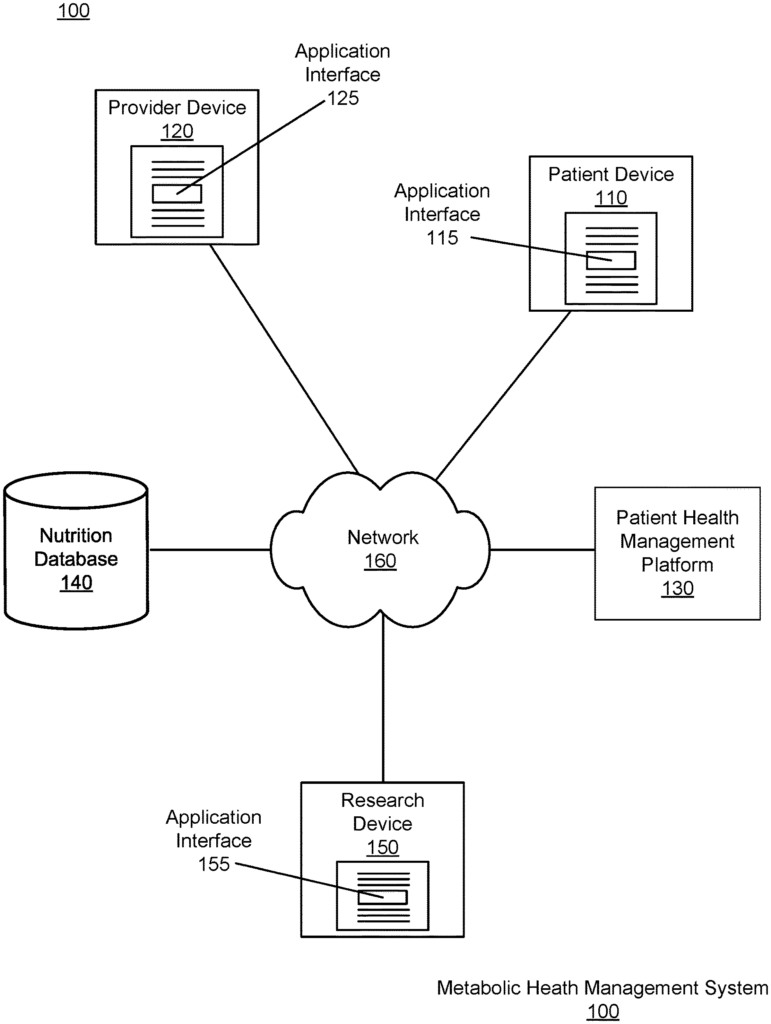
The Twin Health Inc invention works as follows
A patient-health management platform” accesses the metabolic profile of a patient, and biosignals recorded by the patient over a period of time. This includes sensor data or lab test data. The platform encodes biosignals and then inputs that vector representation into a patient specific metabolic model in order to determine the metabolic state of the patients at the conclusion of the time period. The patient-specific metabolism model consists of a set parameter values determined by labels assigned to previous metabolic states, and a function that represents one or more effects from the plurality biosignals in the personalized metabolic profile. The platform compares a patient’s metabolic state to a threshold metabolic condition representing a target metabolic state. The platform creates a treatment recommendation for each patient, outlining the instructions to achieve the functional metabolic condition.
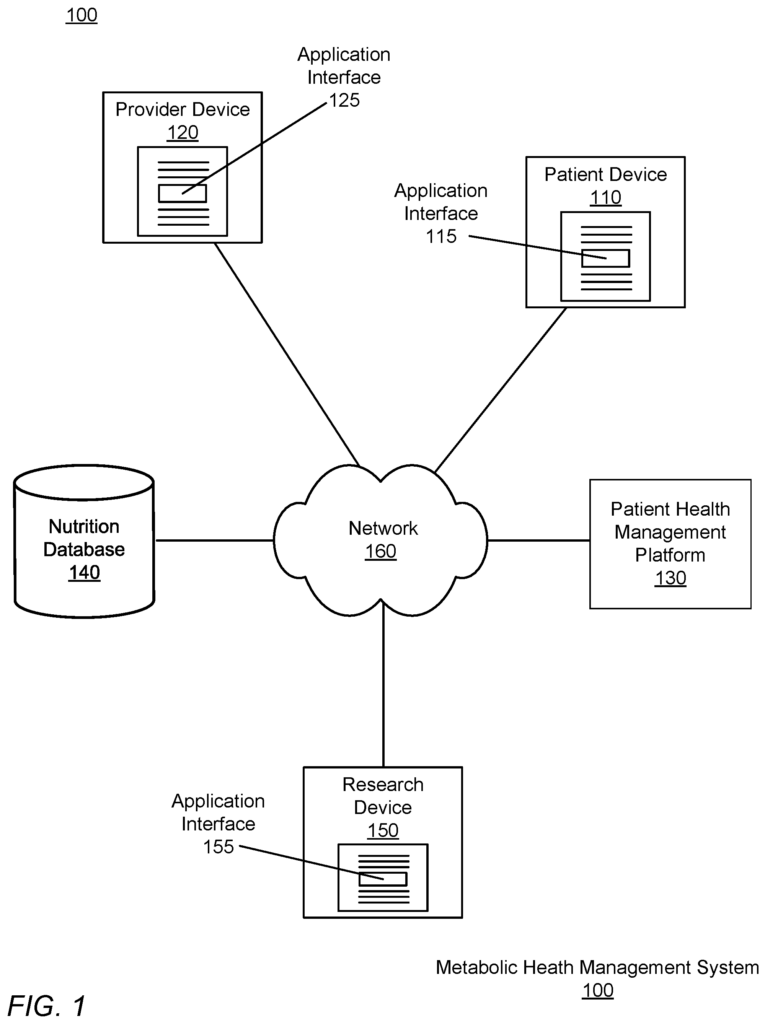
Background for Optimal metabolic outcomes with precision treatment using machine learning and digital Twin technology
Field of Art”,
The disclosure relates generally to a patient health management platform, and more specifically, to a personalized treatment platform for managing the metabolic health of a patient using continuously/continually collected biosignals.
Description of Related Art
In the United States, healthcare costs are estimated at $3.2 trillion per year. 75 % of that is due to metabolic disorders, such as type 2 diabetes and hypertension. Other diseases include heart disease, nonalcoholic fatty liver, cancer, dementia, and polycystic kidney disease. More than 100 millions people in the United States suffer from metabolic diseases, which result in a significant increase in medical costs. Around the world, nearly 425 millions adults have diabetes and close to 325 are at risk for Type 2 diabetes. In 2017, diabetes was responsible for $727 billion in health expenses. This number continues to rise every year. The medical community has viewed type 2 diabetes so far as a chronic, progressive disease. Once it’s been diagnosed, diabetes is a permanent condition. The medications may reduce blood sugar (the symptom), however, they do not treat the disease. The management of diabetes treatment involves expensive medications, painful injections of insulin, constant finger-pricking, dietary restrictions and other factors which result in a loss of quality of life. The diabetic patient suffers from a weakened immune system, tissue death, amputations, numbness and an increased risk of heart diseases.
Traditional disease management techniques or platforms either fail to understand or ignore important markers such as blood glucose dysregulation and root causes of these diseases such as processed food and a lack exercise. These platforms have traditionally been designed to treat the symptoms of a disease, rather than the root cause. The deterioration in a patient’s metabolism health. The platforms that were used to treat metabolic disorders focused on the ‘average’ patient. Instead of tailoring treatment and management regimens for each patient’s metabolic health, platforms that have attempted to treat metabolic diseases focused on an “average” patient. As a result, these platforms may prescribe treatments with diminished efficacy, or side effects that are unwanted (e.g. prescribing too much medication).
Conventional disease management platforms also struggle to tackle two challenges. They are unable, first, to collect relevant biosignal information in a timely fashion, verify the accuracy of the data acquired, and confirm the completion of the ongoing data collection, so that the resulting treatment recommendations can be trusted. These platforms also fail to ensure that patients adhere to the treatment recommendations they are given. The traditional approach is to manually collect such data and monitor the patient’s adherence. This results in inaccurate, inconsistent and delayed results.
A patient management platform to manage a patient’s metabolism diseases generates precision treatments using machine learning techniques. It analyzes a unique combination continuous biosignals from at least one of the following sources: near-real-time biological data collected by wearable sensors; biological data collected by lab tests; nutrition data, medication data, and symptoms of patients. The platform uses various analyses to create a personalized metabolic profile by understanding how continuous biosignals affect the patient’s health. The platform generates a time series of metabolic states based on biosignals continuously/regularly recorded for a period of time, which allows the platform to gain insight into not only the patient’s current metabolic state at particular time points within a day/time period, but also a complete history of metabolic states that led to that current metabolic state (e.g., a collection of metabolic states at multiple time points across preceding days/time periods). These biosignals will be input into machine-learned models that recommend personalized treatment based upon a unique metabolic profile for the patient.
The machine-learned models are trained using a large amount of historical patient data, including daily metabolic inputs, such as labeled metabolic state and input biosignals, and daily metabolic outputs, such as changes in metabolic states across a population of people. The model can predict future responses to input biosignals not only for patients in the training group, but for new patients as well, based on their metabolic state and input biosignals. The model is not required to be retrained when it comes to new patients as a result. The model can predict the responses to input biosignals at different stages in a patient’s treatment because their metabolic state changes.
The patient health management platform creates personalized recommendations based on the output from the machine-learned models. These recommendations outline a treatment plan to improve the metabolic health of a patient. The patent health management platform can generate personalized recommendations, such as a nutrition plan and a medication regimen, or an exercise and sleeping schedule. These recommendations can also be time-specific. For example, they may include recommendations to take specific actions at specific times (e.g. eating a certain amount of food at 3pm). The recommendations can be reviewed by coaches and doctors to ensure accuracy and utility before they are delivered to patients via an interface of an app on a mobile phone. As a patient adheres to these recommendations over time, the platform measures changes in metabolic state, allowing it to dynamically calculate the impact of every recommendation. The quantification and changes captured serve as a further feedback loop for optimizing and refining the recommended treatments.
The patient health management will evaluate the data collected by the patient in order to verify the accuracy and completeness. A timeliness measurement measures the time between the event data (e.g. nutrition or symptom information) and the date the data was recorded by the patients. A measurement of accuracy evaluates whether the data entered is accurate or if it was incorrectly reported (e.g. if a food item has been omitted). Completeness is a measurement that determines if any important data are missing from the patient record. The patient health management platform uses information from the patient to generate a prediction about the metabolic state of the patient. The patient health platform compares the predicted state with the true state of the patient’s metabolism and flags any discrepancies. The flagged inconsistencies may be attributed to patient errors when recording data. To encourage improvements in the above metrics, the patient health management platform may evaluate a patient’s record of entries by assigning the patient a timeliness/accuracy/completeness (TAC) score and dynamically updating the TAC score based on the patient’s subsequent patient data entries.
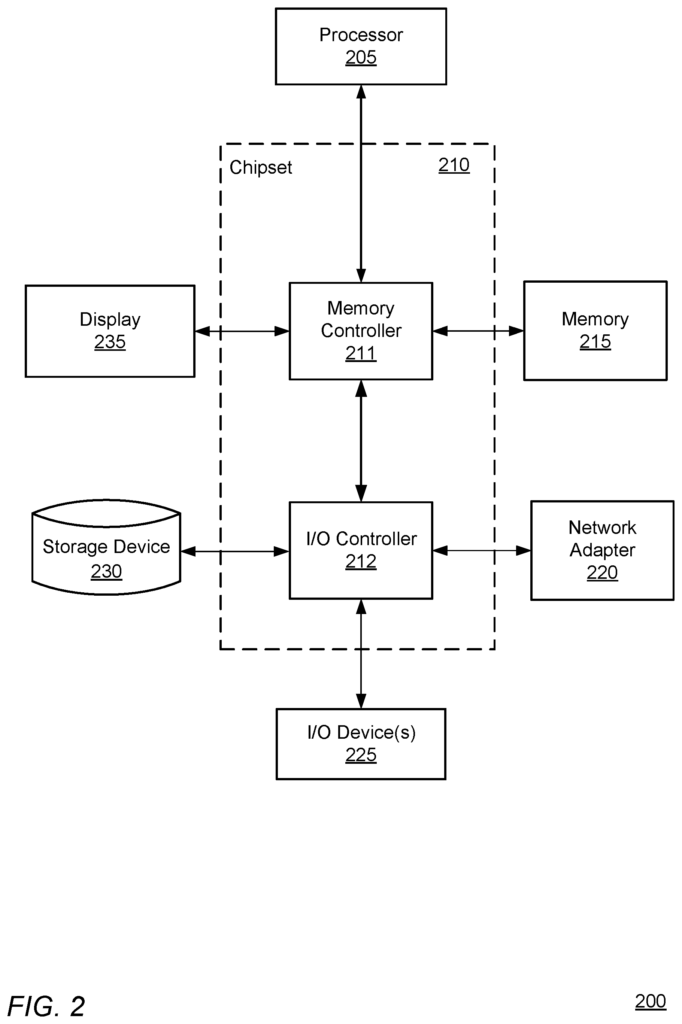
BRIEF DESCRIPTION DES DRAWINGS
FIG. “FIG.
FIG. “FIG.
FIG. “FIG.
FIG. “FIG.
FIG. “FIG.
FIG. According to one embodiment, FIG. 5 shows a flowchart that illustrates a process of generating a recommendation specific to a particular patient for improving their metabolic health.
FIG. “FIG. 6 is a diagram showing the system architecture for a digital-twin module according to an embodiment.
FIG. “FIG.
FIG. “FIG. 8A illustrates the process of implementing a machine learned model to predict patient specific metabolic responses, according to an embodiment.
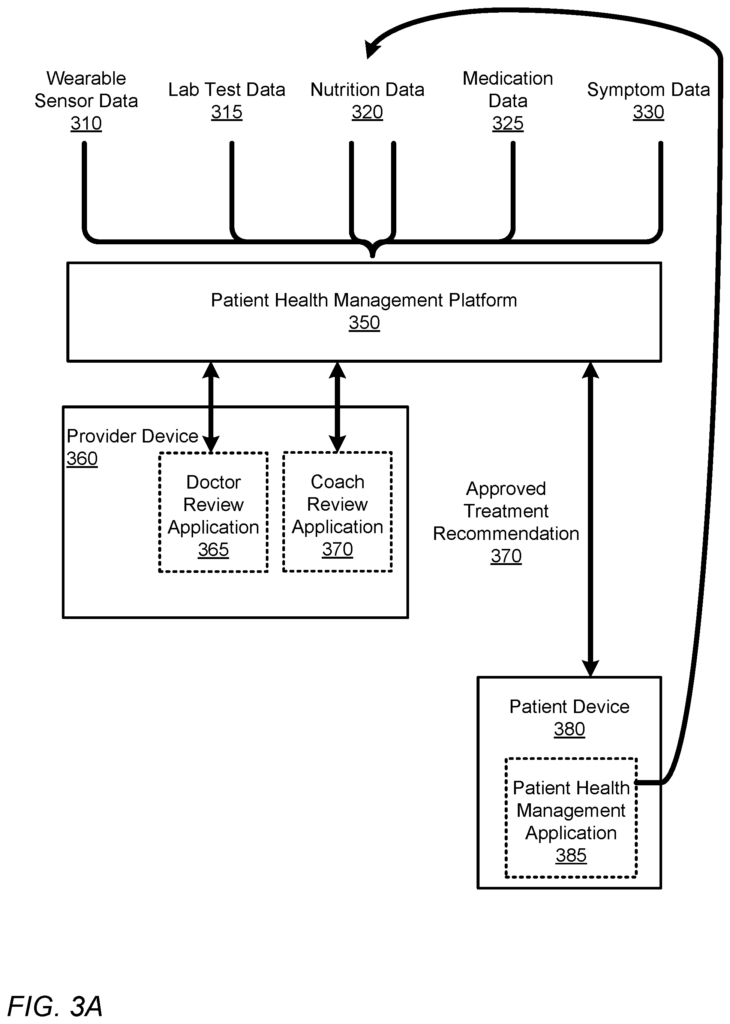
FIG. According to one embodiment, FIG. 8B illustrates a process for comparing a predicted metabolic state of a patient with their actual metabolic state in order to verify the accuracy, completeness, and timeliness with which the patient recorded biosignals.
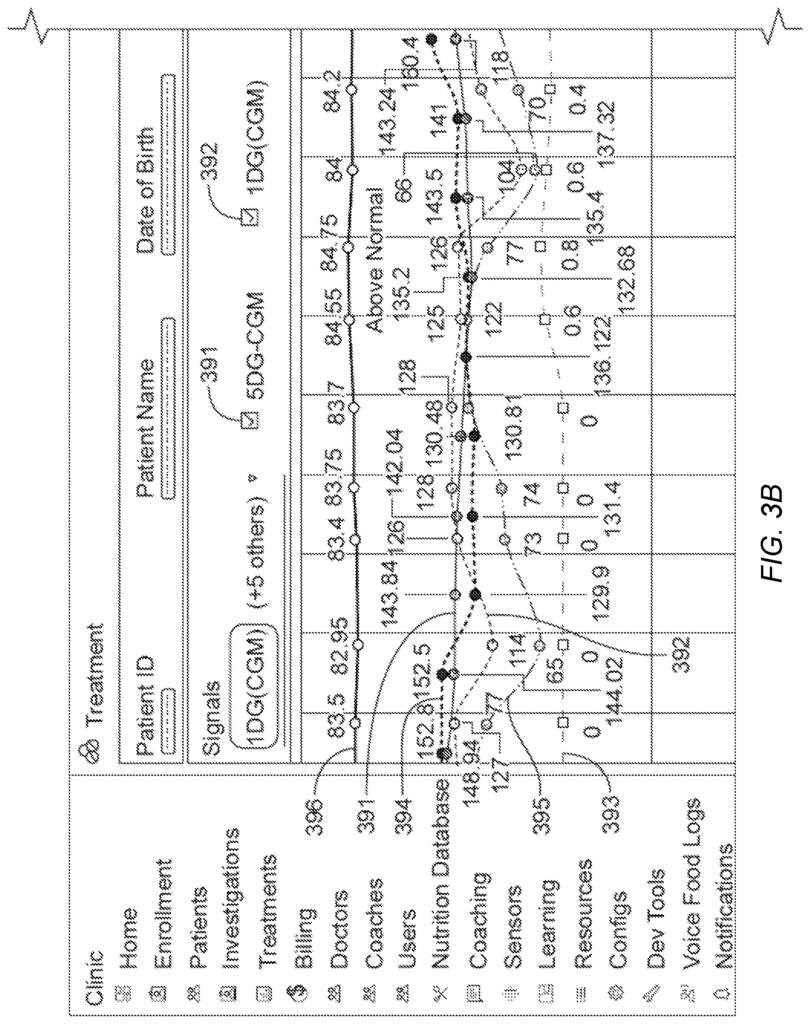
Click here to view the patent on Google Patents.
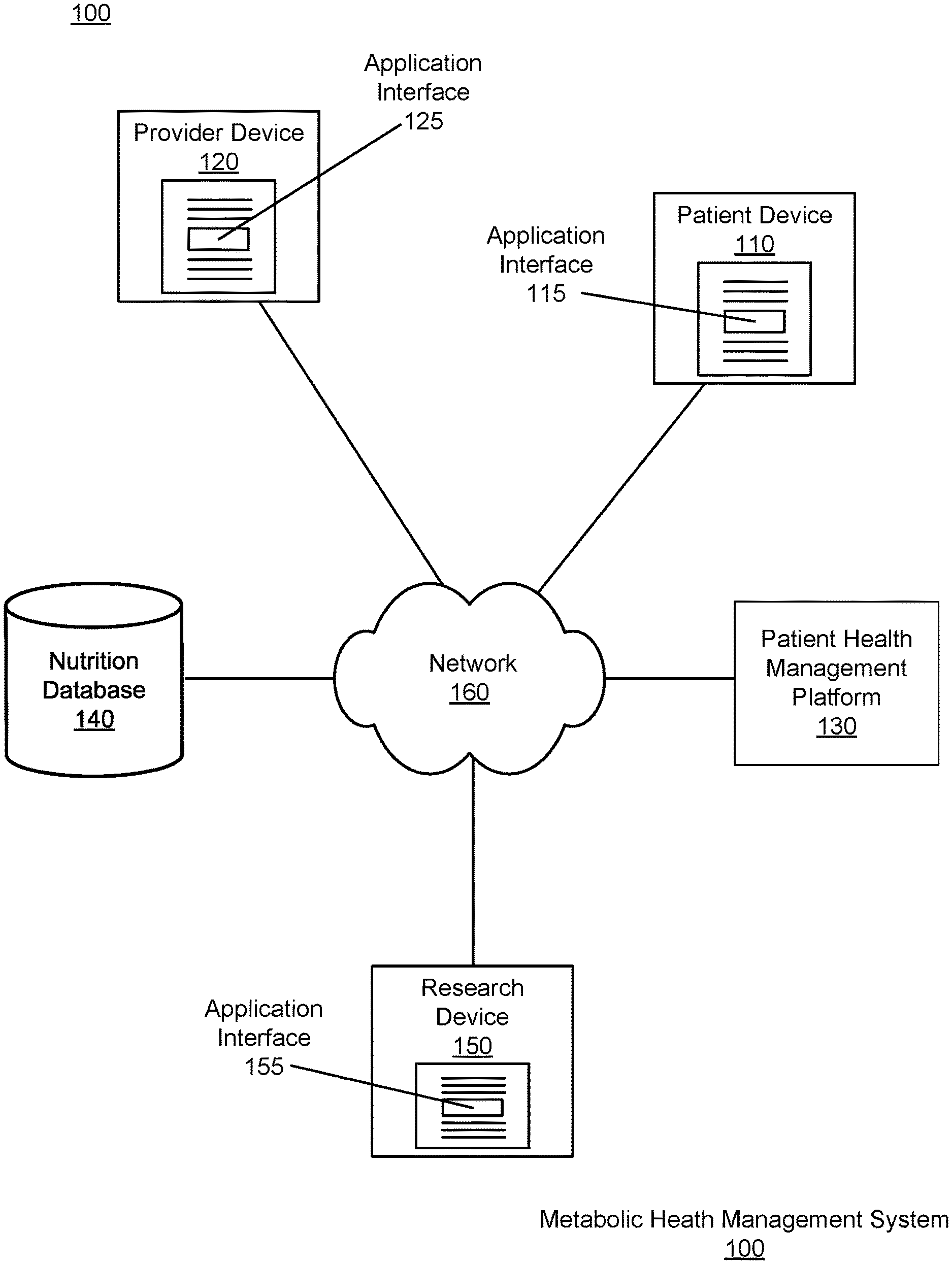
Leave a Reply